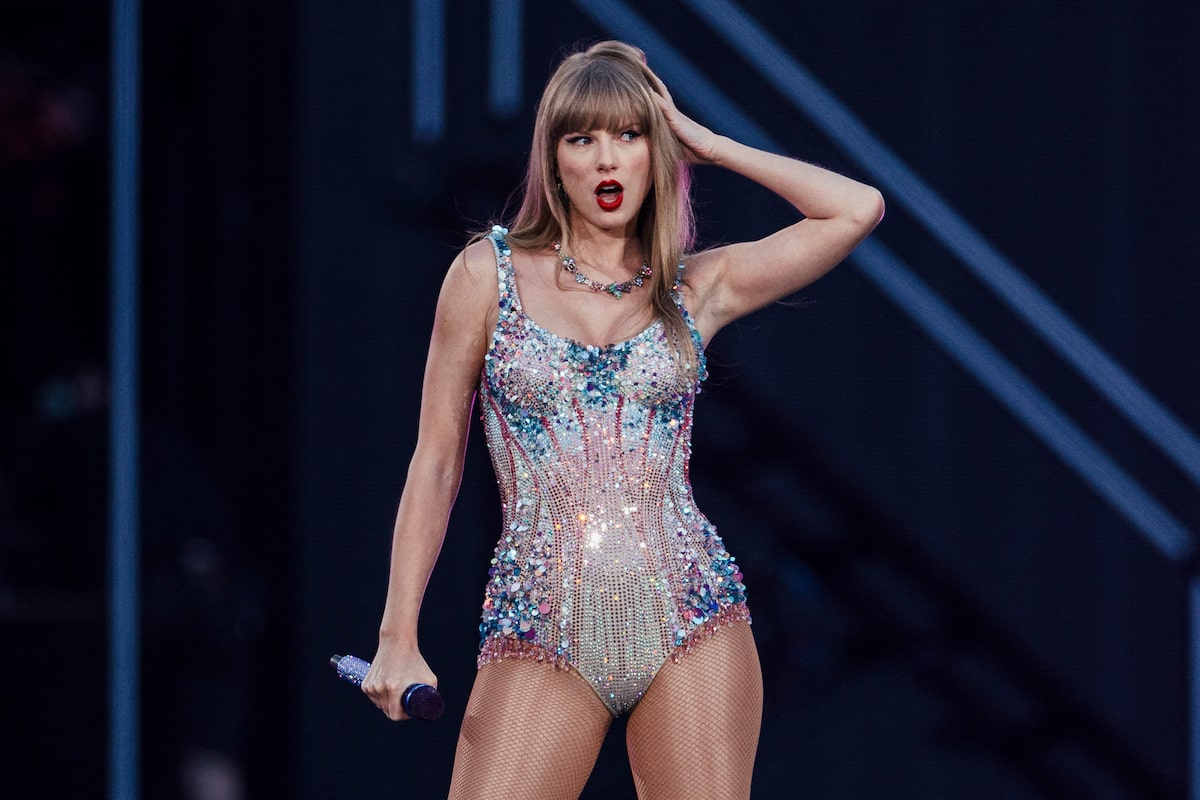Taylor Swift released promotional videos to accompany The Life of a Showgirl that some fans say were made using artificial intelligence. A screenshot from one of the videos shows a decorated piano that lacks details, suggesting it was made with generative AI.Supplied
I remember vividly the first time I found a Taylor Swift Easter egg – a secret code nestled between the lyrics of a song about schoolyard bullies in the liner notes of Speak Now.
The 2010 album explored the heartbreaks that follow a first love, the comings of age that define early adulthood. I wasn’t yet a teenager, but thanks to Swift’s solo songwriting, I knew exactly how becoming one would feel: I had the blueprint in my hands, a survival guide tucked inside a plastic jewel case that I covered in stickers. There was no doubt that the record had been written by someone a lot like me, someone who cried in her bedroom and danced dorkily with her friends on Friday nights. Someone who liked to create – and solve – mysteries.
The Life of a Showgirl, Taylor Swift’s 12th studio album.The Associated Press
Swift’s trademark relatability has in many ways been rooted in her Easter eggs – the stuff outside the songs. The liner notes were dotted with secret messages (“I thought you got me” on Mean, for instance, a be-nice-to-each-other anthem allegedly written in response to unkind criticism of her work). Small icons on Swift’s jewellery and nails, too, have provided listeners clues about the singer’s next steps.
For decades, those winks to fans have made the music more exciting – and somehow more human.
Which makes the events of the last week all the more dispiriting.
On Friday, Swift released her 12th studio album, The Life of a Showgirl. A few outlying raves aside – a perfect score of 100 from Rolling Stone, for instance – the project received a more lukewarm critical reception than most of her previous work, largely owing to its uncharacteristically clunky lyrics. (Commercially, it’s fared fine: It sold 2.7 million copies in its first 24 hours.)
An odd shape on the back of a squirrel and misshapen letters on a document suggest the videos were made using AI.Supplied
Over the weekend, Swift – or, at least, her team – released a series of promotional videos (that have since been made private) in partnership with Google. This was standard Easter egg fare for the most famous woman on Earth: She and Google have collaborated frequently in recent years, most memorably for the rollout of 1989 (Taylor’s Version) in 2023.
But the eagle-eyed among Swift’s fans spotted more than just cheeky codes in those videos. There was a squirrel with an odd appendage sprouting from its back; a treadmill with gibberish buttons; Swift’s upright piano from the Eras Tour covered in illogical squiggles rather than the hand-painted flowers that so delighted fans during the concert’s acoustic section. Inconsistent fonts. Hallucinated hands. Uncanny faces.
It’s possible – although, based on the above, unlikely – that Swift didn’t use generative artificial intelligence to market The Life of a Showgirl.
But the discovery that AI might be at the centre of Swift’s latest claim to uberwealth has left me feeling more than mere disappointment. It’s something darker, sharper – an abandonment of the lighthearted games that once made being a Swiftie so special.
Indeed, the possible use of AI to share Easter eggs may mark a new era for Swift. Less than a year ago, the singer spoke out against the technology in the context of deepfakes. As part of an Instagram takedown of then-U.S. presidential nominee Donald Trump, she cited her “fears around AI, and the dangers of spreading misinformation.”
But surely she must clock the cognitive dissonance at play here, the horrific implications of using AI to bolster a vision that, in her own words, is the album she’s wanted to make “for a very long time.” Surely she must see that the AI she once denounced and the AI she appears to be profiting from now are one and the same.
Then again, the Swift who made and marketed The Life of a Showgirl – the Swift who seems to have become chummy with a technology capable of undercutting original, human-created art – might not be the same Swift who made all those other albums.
In early 2024, Swift was still, by and large, the admirable, cat-loving singer whose romantic vocabulary made her feel approachable, despite having a net worth that would come to approximate the GDP of Lesotho. She donated unfathomable sums of money to food banks around the world, and offered bonuses worth hundreds of thousands to her tour staff. She defended art and artists.
Taylor Swift performs during the Eras Tour in Lisbon in May, 2024.ANDRE DIAS NOBRE/AFP/Getty Images
Today, the Swift who may have deliberately used AI to fog her own work is a Swift I don’t recognize. That same Swift who once renounced Trump is now friendly with, or at least indifferent to, a number of MAGA-aligned mega-celebrities, and her lyrics continue to scream that wealth is secondary to true happiness as she private-jets across the world.
The possible AI usage is a symptom of a much larger problem, one that finally came to a boil this week: Easter eggs are no longer a spontaneous flourish of authenticity from Swift. They’re a marketing gimmick.
I’m sure Swift will brush off #SwiftiesAgainstAI, the fan-driven hashtag that trended over the weekend, as mere sanctimony. Perhaps in another 18-month album cycle I’ll be another Mean; “I thought you got me,” she’ll spell out in ChatGPT-styled slop between the lines of her latest single.
I thought I did, too, Taylor.

